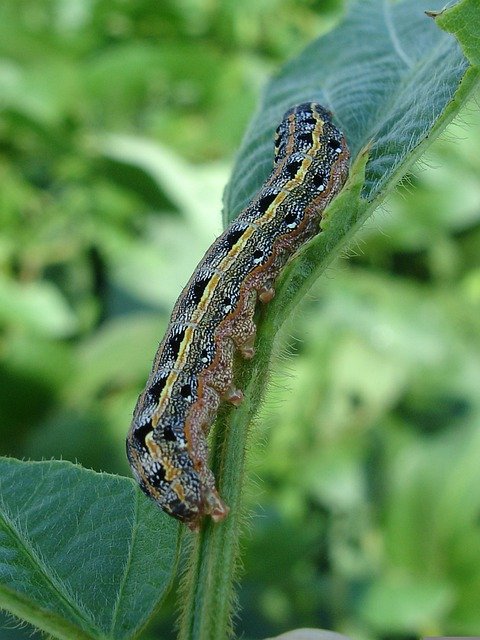July 8, 2024 – Armyworms are notorious pests that can cause significant damage to crops, pastures, and turfgrass. The Texas A&M AgriLife Extension Service offers comprehensive resources and advice to help farmers and gardeners manage these pests effectively. Armyworms are the larvae of certain moth species, commonly the fall armyworm (Spodoptera frugiperda) and the true armyworm (Mythimna unipuncta). These caterpillars are typically green, brown, or black and have distinct stripes running along their bodies. They are named for their behavior of moving in large, “army-like” groups from one area to another, devastating vegetation as they go. The armyworm life cycle begins with adult moths laying eggs on host plants or nearby surfaces. These eggs hatch into larvae within a few days. The larval stage, which causes the most damage, lasts about two to three weeks. During this time, the caterpillars feed voraciously on plant material. After the larval stage, they burrow into the soil to pupate, emerging as adult moths about a week later. This cycle can repeat several times a year, especially in warmer climates. Armyworms are highly destructive due to their feeding habits. They consume a wide range of plants, including grains (like corn, wheat, and rice), grasses, and many vegetables. Damage is often seen as ragged holes in leaves, chewed leaf margins, and in severe cases, complete defoliation. Young seedlings are particularly vulnerable and can be entirely consumed, leading to significant yield losses.
Effective management of armyworms involves an integrated approach: Monitoring: Regular field scouting is crucial for early detection. Look for egg masses, young larvae, and signs of feeding damage. Use pheromone traps to monitor adult moth populations and predict larval outbreaks.
Cultural Practices: Implement crop rotation to disrupt the life cycle of armyworms. Maintain healthy soil and plant vigor to reduce susceptibility to infestations. Avoid late-season planting, which can coincide with peak armyworm activity.
Biological Control: Promote natural predators such as birds, parasitic wasps, and beneficial insects like lady beetles and lacewings. Consider introducing commercially available biological control agents like *Bacillus thuringiensis* (Bt), a bacterium that targets caterpillar pests.
Chemical Control: Insecticides may be necessary when armyworm populations reach damaging levels. Select products that are effective against armyworms and follow label instructions carefully. Rotate insecticides with different modes of action to prevent resistance development.
Armyworms present a significant challenge to agricultural production, but with vigilant monitoring and a combination of cultural, biological, and chemical controls, their impact can be managed. For tailored advice and the latest information on armyworm management, the Texas A&M AgriLife Extension Service remains a valuable resource. For more information on this or any other agricultural topic please contact the Hopkins County Extension Office at 903-885-3443 or email me at [email protected].







